
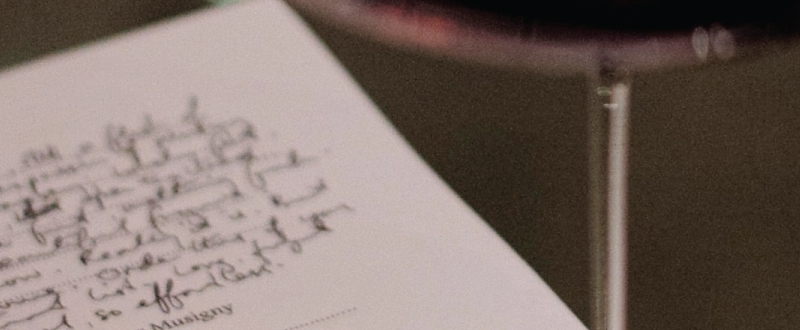
On a damp morning this February, I find myself behind the wheel of a chunky American rental SUV heading south to visit Lucunda. The short trip takes me through Windsor, a small, Beaune-sized town – quieter, more ‘normal’ than nearby visitor-haven Healdsberg. As I slow to the trickle-through speed limit past the local high school the satnav pops up names like Zinfandel Drive, Pinot Noir Way, and Bouquet Circle… it’s wine country here. Staying on Starr Road as the suburban view gives way to paddocks, horses and fruit trees on now gently rolling country, winery signs begin to appear, but Lucunda is discreet. Behind a large electrically-controlled gate, at this 8-hectare Pinot Noir estate is also a strikingly handsome modernist-styled contemporary house – home away from home for Hong Kong entrepreneurs Esther and Derek Chan, and I’m here to meet their winemaker – Cabell Coursey.
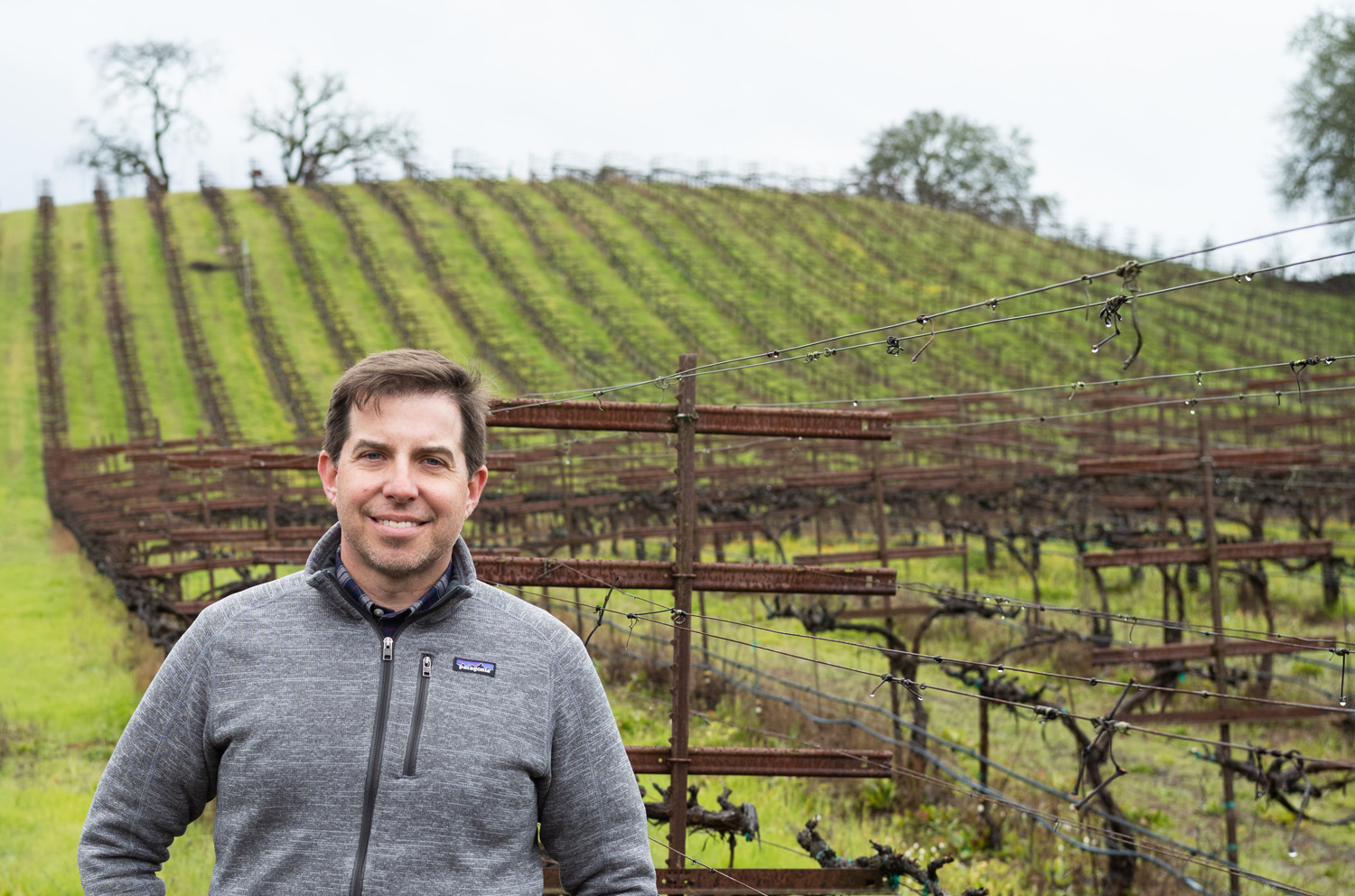
Cabell’s story is an interesting one – one that illustrates just how uniquely interconnected the world of Pinot Noir can be, and how much happenstance can shape our lives. In 1999, during his US undergraduate degree, in a field entirely unrelated to wine, he did a short exchange to Dijon University, which involved a homestay with some Méos – cousins to the Domaine Méo-Camuzet. That led to working harvest that year. “I was a competitive guy, not yet really into wine, but I wanted to outwork the French!” That, going back to work harvests during summer breaks as he finished his first degree (and some skill with horses, having grown up in Georgia), landed him work at Domaine Leroy. In Burgundy, he also met fellow American Ted Lemon (Littorai, and ex-Roulot) during that time, and even ended up in New Zealand with him, planting bare blocks with Pinot Noir that would give life to Burn Cottage (which we import). Harvests continued – in both Burgundy (Méo-Camuzet, Hudelot-Noellat), and places like Bindi in Australia, and Felton Rd in New Zealand. With a wealth of experience, and a masters degree in viticulture and oenology at Lincoln University, he embarked on a winemaking and vineyard management career that has included Kosta Browne, Lombardi and Flanagan, as well as his own California projects – Works and Days, and Coursey Graves. There are not ‘six degrees of separation’1 in the world of Pinot Noir – only one.
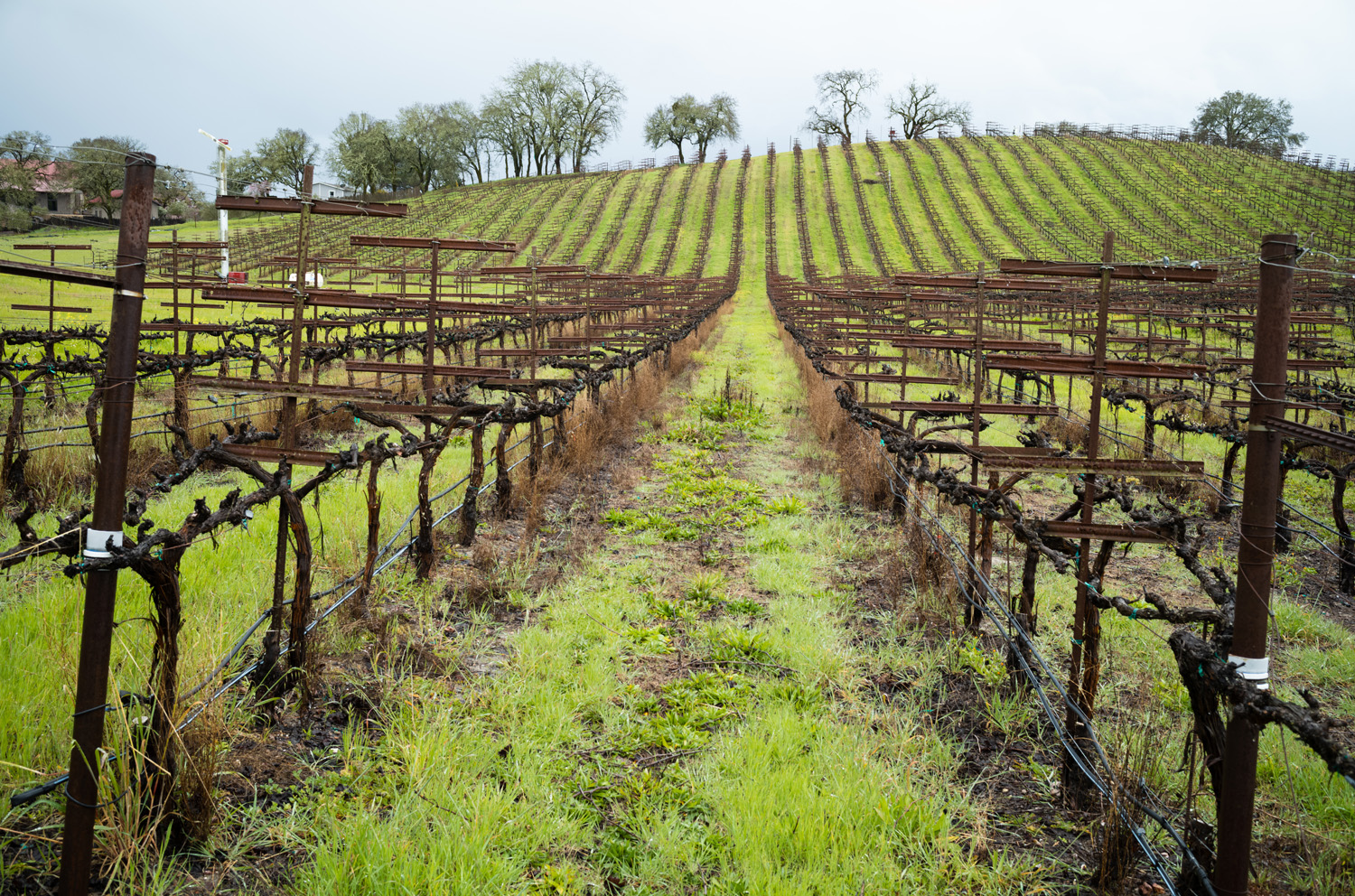
Cabell takes pity on me as we are about to begin our walk through the recently rain-soaked vineyard, and hands me a pair of wellington boots from his truck. They fit, miraculously. We are looking at an already mature vineyard on small rolling hills of cobbly loam on top of deep gravels (much like the Gimblett Gravels in Hawkes Bay, Cabell suggests), in the Russian River alluvium area. “There are lots of rocks in the soil.” Russian River presents a climate well-suited to Pinot Noir because of an inversion layer of cold air that settles here, extending the growing season. “It’s warmer that the Côte de Nuits, but much cooler than Napa, and also wetter, due to the fog. The vines grow bigger, and they build bigger canopies earlier, so in the dry part of the season, some drip irrigation is needed – about one gallon every other week, per vine.” Compared to Burgundy, it feels luxuriously spacious here, with plantings at 10 feet by 4 feet – 1200 vines per acre (about 3,000 vines per hectare). The old vines are planted in a quad permanent cordon fashion. “Derek and Esther, being very quality focused, are opting for lower yields here – just one cluster per shoot.” Virus is an issue in this old wood however, and a replanting programme is underway – tighter spaced at 6 feet by 3.5 feet, and in a standard guyot pattern. The planning focus here is maximising this fine site’s potential.
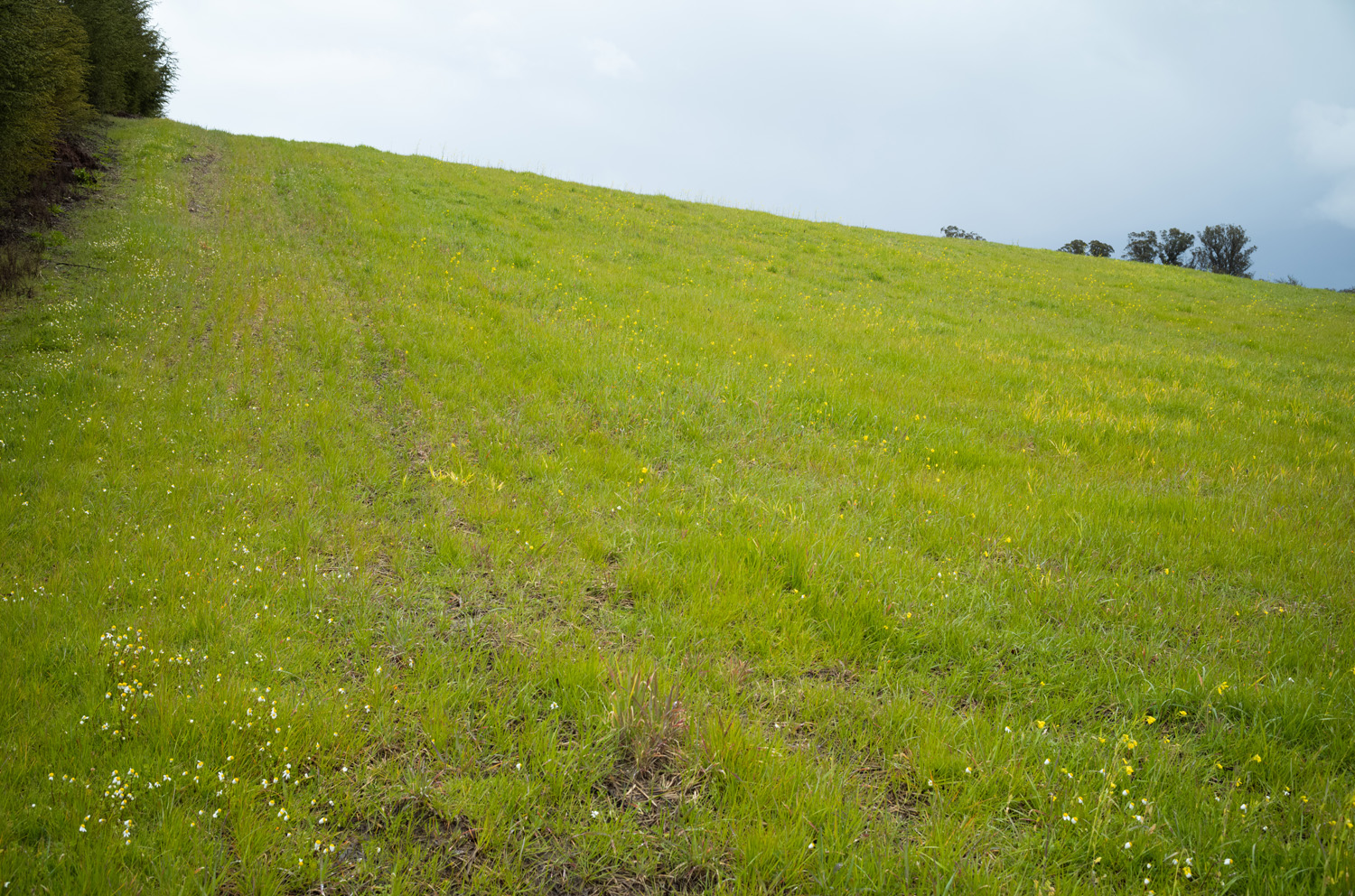
Future Chardonnay vineyard at Lucunda
Cabell suggests I follow him to his winery at Coursey Graves in nearby Bennet Valley, where Lucunda is made. As I tail his pick-up truck, its rear tyres lift wisps of water vapour that swirl and intersect like two dancing dragons, and my mind turns to Derek and Esther back in Hong Kong. What an amazing spot they have found.
In the cellar we taste first from a new barrel a part of what will be assembled into the 2022 Lucunda Pinot Noir. The fruit from this barrel comes from a Pommard clone in the lower section of the vineyard.
Fresh mid-colour; a delicate expression, gently floral, savoury and musky; the palate is taut, nicely framed, pretty, there’s some density but it dances nicely. Lovely.
Then we taste 2022 Lucunda Pinot Noir from a barrel with fruit sourced from the top of the Lucunda hill, planted to a mix of Pommard and Dijon 777 clones.
Vibrant clear crimson; more raspberry fruit expression on the nose and also a cool, sweet-earthy beetroot-like note; the palate is more supple and sticky, ripe and generous, creamy and sumptuous, a touch of red apple, fine tannins in the finish.
There’s also a single 500-litre 3rd use barrel of 2022 Lucunda Chardonnay – Russian River fruit from the Charles Heintz Vineyard, planted in 1975, and discovered by Ted Lemon in 1992. Cabell has been making wine from this vineyard since 2007.
A pretty nose, floral, red apple and a touch of oak scent; fresh-cut pineapple, very juicy and fresh with a creamy-round texture. Delicious.
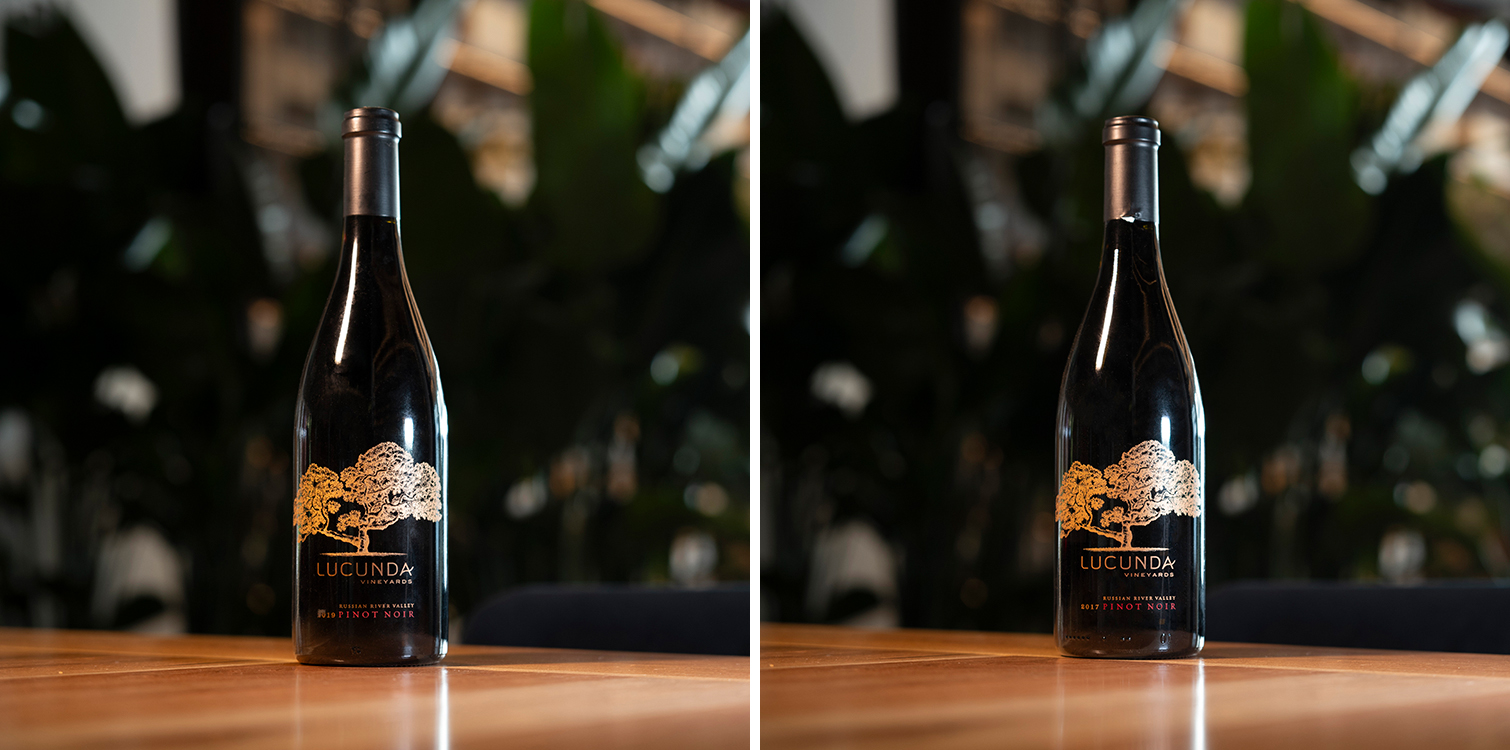
Of course, the 2022 wines are a few years off from seeing a place on the shelves of The Fine Wine Experience in Hong Kong, but I look froward to enjoying the finished ‘22s when they do. In the meantime we are pleased to offer three ready-to-drink examples in stock – 2019 and 2017 Lucunda Russian River Valley Pinot Noir, and 2020 Lucunda Russian River Valley Chardonnay. Derek and Esther Chan – lovers of fine Burgundy and California wines for many years, now with a slice of the magic of their own, are focused on the best possible quality they can extract from their Russian River estate, and we are proud to bring them ‘home’ to Hong Kong to share with you.
